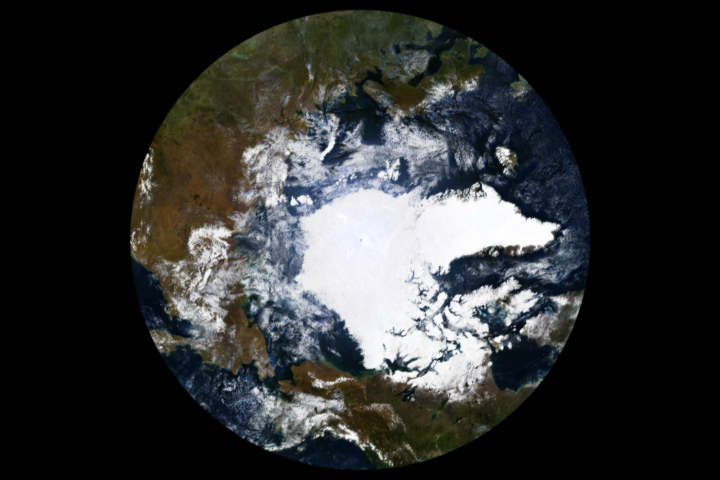The ice is melting everywhere.
One of the most dramatic melts is the North polar icecap, which is shrinking rapidly. The US National Snow and Ice Data Center reports this fall on the “minimum” for 2019, based on measurements from several satellites [1]. On September 17, the area covered by ice was 4.15 million square kilometers, which is the second smallestarea ever recorded (these records go back to 1979).
The NSIDC reminds us that there still could be a late season heat wave or storm that pushes the ice back even farther. The lowest recorded minimum in 2012 was partly due to a powerful cyclone that smashed into the ice [2].
Changing winds or late-season melt could still reduce the Arctic ice extent, as happened in 2005 and 2010. (from [1])
It seems clear that the ice is disappearing at the North pole, as it is everywhere.
These particular data are a bit tricky to define for a number of reasons. For one thing, “sea ice cover” is a bit, well, slushy. There can be a lot of ice in the water that is still mostly water, and a lot of chunks with water in between, and also ice under the surface. The NSIDC has heuristics for estimating these, and for defining areas “covered” with sea ice, so these annual estimates should at least be comparable to each other.
In addition to uncertainties in the data, there is no data at all before 1979, a mere 40 years ago. So, we can’t really say much about long term trends in the past. And while this year is the second lowest on record, over the last dozen years the data are basically going up and down in a small range. We are in a relatively low ice period, but things aren’t changing fast.
Still, I’d bet the ice will continue to shrink, just as all the models predict. This will have, and probably already is having, a positive feedback effect on ocean temperatures. Exposed sea water is darker and absorbs sunlight faster than ice, increasing the warming in the summer, and generating warmer water that contributes to the overall warming of the oceans.
One thing that the melting ice cap does not do is increase sea levels, at least in any direct sense. Going from ice to liquid reduces the volume of the water.
- National Snow and Ice Data Center, Arctic sea ice reaches second lowest minimum in satellite record, in Arctic Sea Ice & Anaysis. 2019. https://nsidc.org/arcticseaicenews/2019/09/arctic-sea-ice-reaches-second-lowest-minimum-in-satellite-record/
- Maria-José Viñas, 2019 Arctic Sea Ice Minimum Is Second Lowest, in NASA Earth Observatory. 2019. https://earthobservatory.nasa.gov/images/145641/2019-arctic-sea-ice-minimum-is-second-lowest






